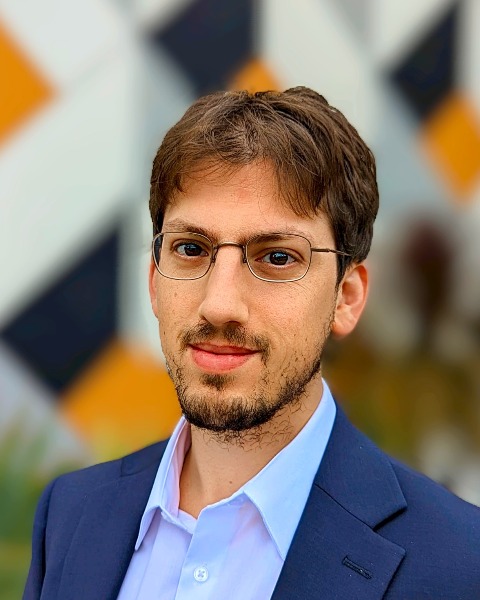Back
Introduction: Recent studies have shown the significance of pulse modulation in energy delivery to the stone with better ablation and less retropulsion. Thulium Fiber Laser (TFL) is a novel laser technology with a different wavelength and pulse characteristics to holmium and is increasingly used for lithotripsy. Our aim was to characterize the TFL pulse to better understand parameter selection.
Methods: Using a commercially available TFL system (Fiber Dust, Quanta) we characterized the optical (temporal) profiles of a single pulse at 1J Shortest Pulse (SP), 1J Longest Pulse (LP), 3J SP, and 2.4 LP with a photo detector. By using MATLAB we normalized the optical profiles with the average pulse energy as measured by a power meter (n=100). We then performed high-speed imaging at 50,000 frames per second on the vapor bubble generated by pulses of 1J SP and 1J LP. Using MATLAB we segmented the bubble anatomy and measured its maximal width and length at each frame to quantify bubble dimensions.
Results: The temporal profile of the TFL pulse is rectangular in shape with a uniform power throughout the entire pulse besides a brief initial peak ( <1% of the pulse energy). The full width half max (FWHM) for 1J SP, 1J LP, 3J SP, and 2.4J LP was calculated to be 2022.5 µsec, 5995 µsec, 6025 µsec, and 11990 µsec, respectively with a peak power governed by the pulse length: 474 Watts for SP and 167 Watts for LP (Figure 1). Both SP and LP of 1J reached the same maximal vapor bubble length of 4 mm, and the same maximal width of 1.8 mm. However, SP had intermittent closure of the channel while the LP channel appeared to elongate along the pulse duration (Figure 2).
Conclusions: This study quantifies some of the single pulse characteristics of a TFL. In the system tested, the peak power was a function of the pulse duration and not the pulse energy. SP had multiple generations of bubble formation, almost like a multi-pulse, while LP had a channel shape that elongated and widened along the pulse duration. Further investigation is required to understand how these impact ablation. SOURCE OF
Funding: None


Moderated Poster Session
Session: MP26: Surgical Technology & Simulation: Instrumentation & Technology I
MP26-19: Characterization of Thulium Fiber Laser Pulses: Differences between Short and Long Pulse
Saturday, April 29, 2023
7:00 AM – 9:00 AM CST
Location: S403

Ron Marom, MD
Research fellow
Technion
Poster Presenter(s)
Introduction: Recent studies have shown the significance of pulse modulation in energy delivery to the stone with better ablation and less retropulsion. Thulium Fiber Laser (TFL) is a novel laser technology with a different wavelength and pulse characteristics to holmium and is increasingly used for lithotripsy. Our aim was to characterize the TFL pulse to better understand parameter selection.
Methods: Using a commercially available TFL system (Fiber Dust, Quanta) we characterized the optical (temporal) profiles of a single pulse at 1J Shortest Pulse (SP), 1J Longest Pulse (LP), 3J SP, and 2.4 LP with a photo detector. By using MATLAB we normalized the optical profiles with the average pulse energy as measured by a power meter (n=100). We then performed high-speed imaging at 50,000 frames per second on the vapor bubble generated by pulses of 1J SP and 1J LP. Using MATLAB we segmented the bubble anatomy and measured its maximal width and length at each frame to quantify bubble dimensions.
Results: The temporal profile of the TFL pulse is rectangular in shape with a uniform power throughout the entire pulse besides a brief initial peak ( <1% of the pulse energy). The full width half max (FWHM) for 1J SP, 1J LP, 3J SP, and 2.4J LP was calculated to be 2022.5 µsec, 5995 µsec, 6025 µsec, and 11990 µsec, respectively with a peak power governed by the pulse length: 474 Watts for SP and 167 Watts for LP (Figure 1). Both SP and LP of 1J reached the same maximal vapor bubble length of 4 mm, and the same maximal width of 1.8 mm. However, SP had intermittent closure of the channel while the LP channel appeared to elongate along the pulse duration (Figure 2).
Conclusions: This study quantifies some of the single pulse characteristics of a TFL. In the system tested, the peak power was a function of the pulse duration and not the pulse energy. SP had multiple generations of bubble formation, almost like a multi-pulse, while LP had a channel shape that elongated and widened along the pulse duration. Further investigation is required to understand how these impact ablation. SOURCE OF
Funding: None


